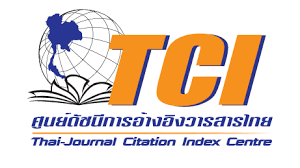Active Islanding Detection Techniques of Anti-Islanding for Grid-Connected Distributed Generation: Part 1
Keywords:
Islanding Detection,, Distributed Generation,, Grid-ConnectedAbstract
This paper presents an overview of the active islanding detection techniques of anti-islanding for grid-connected distributed generation: part 1, they include Impedance Measurement, Harmonic injection/detection of impedance, Sliding Mode Frequency Shift (SMS), Active Frequency Drift (AFD), Frequency Jump (FJ), Sandia Frequency Shift (SFS), Sandia Voltage Shift (SVS), Mains Monitoring Units with allocated All-Pole Switching Devices connected in Series, Variation of Active Power and Reactive Power and General Electric Frequency Schemes (GEFS). Active detection techniques have NDZ less than passive detection techniques but they have weakness. They be inject signal into power system network every time for check apparent islanding condition. The signal perturbs voltage, frequency and various parameter of power system network. Perturbation in the system degrading the power quantity and the system stability. For application example presents in part 2.
References
[2] D. Velasco, C.L. Trujillo, G. Garcera and E. Figueres, “Review of Anti-Islanding Techniques in Distributed Generators,” Renewable and Sustainable Energy Reviews 14 (2010), pp.1608–1614.
[3] De Mango F, Liserre M and Aquila AD., “Overview of Anti-Islanding Algorithms for PV Systems. Part II: Active Methods,” 12th International Power Electronics and Motion Control Conference, 2006, EPE-PEMC 2006. August 30, 2006–September 1, 2006. pp. 1884–9.
[4] Ciobotaru M, Teodorescu R, Rodriguez P, Timbus A and Blaabjerg F., “Online Grid Impedance Estimation for Single-Phase Grid-Connected Systems Using PQ Variations,” IEEE Power Electronics Specialists Conference, 2007, PESC 2007. 17–21, June 2007. pp. 2306–12.
[5] Chunjiang Z,Wei L, Guocheng S and Weiyang W., “A Novel Active Islanding Detection Method of Grid-Connected Photovoltaic Inverters Based on Current-Disturbing,” CES/IEEE 5th International Power Electronics and Motion Control Conference, 2006, IPEMC’06, Vol. 3. August, 2006. pp. 1–4.
[6] Lopes LAC and Sun H., “Performance assessment of Active Frequency Drifting Islanding Detection Methods,” IEEE Transactions on Energy Conversion Vol. 21, No. 1, March 2006. pp. 171–80.
[7] Guo-Kiang Hung, Chih-Chang Chang, and Chern-Lin Chen, “Automatic Phase-Shift Method for Islanding Detection of Grid-Connected Photovoltaic Inverters,” IEEE Transactions on Energy Conversion, Vol. 18, No. 1, March 2003.
[8] Y. Jung, J. Choi, Yu, G. Yu, and J. So, J. Choi, “A Novel Active Frequency Drift Method of Islanding Prevention for the grid-connected Photovoltaic Inverter,” Power Electronics Specialists Conference, 2005.
[9] Wang X, Freitas W, Xu W and Dinavahi V., “Impact of DG Interface Controls on the Sandia Frequency Shift Antiislanding Method,” IEEE Transaction on Energy Conversion September, 2007;22(3):792–4.
[10] H. H. Zeineldin, and S. Kennedy, “Instability Criterion to Eliminate the Non-detection Zone of the Sandia Frequency Shift Method,” Power Systems Conference and Exposition, 2009.
[11] Byunggyu Yu, Mikihiko Matsui and Gwonjong Yu, “A Review of Current Anti-Islanding Methods for Photovoltaic Power System,” Solar Energy 84, pp.745–754, March 2010.
[12] Wen Hu, and Yun-Lian Sun “A Compound Scheme of Islanding Detection according to Inverter,” Power and Energy Engineering Conference, 2009.
[13] Jeong JB, Hee Jun Kim, Soo Hyun Back and Kang Soon Ahn., “An Improved Method for Anti-Islanding by Reactive Power Control,” Proceedings of the Eighth International Conference on Electrical Machines and Systems, 2005, ICEMS 2005, Vol. 2; 29 September, 2005. pp. 965–70.
Downloads
Published
How to Cite
Issue
Section
License
The published articles are copyrighted by the School of Engineering, King Mongkut's Institute of Technology Ladkrabang.
The statements contained in each article in this academic journal are the personal opinions of each author and are not related to King Mongkut's Institute of Technology Ladkrabang and other faculty members in the institute.
Responsibility for all elements of each article belongs to each author; If there are any mistakes, each author is solely responsible for his own articles.





